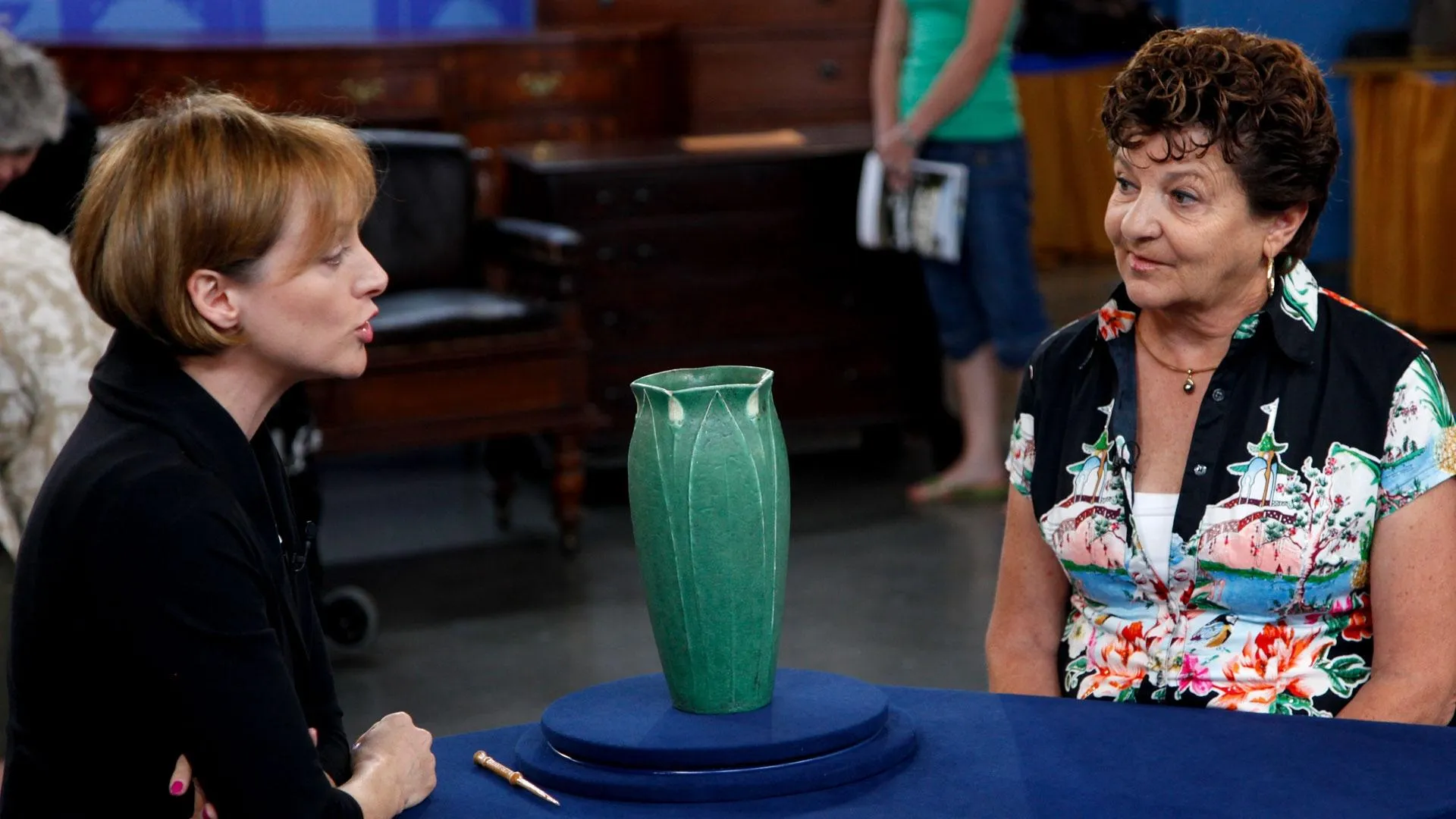GUEST: The story that I've been told from my mom is that it was purchased by my grandfather at an auction. He came over from Croatia and eventually made his way to San Francisco, and he used to love to attend auctions. This is one of the things he brought home one day.
APPRAISER: When, approximately, would he have acquired this?
GUEST: He died in 1926, and I think he probably came to the United States maybe about 1910 or so, so somewhere between that period. What I've been told about the painting, it's by an Italian artist, and it comes from the 1800s. The subject is Abraham's slave girl Hagar, and this is her son Ishmael. This is when they were banished off into the desert. When I was growing up, it hung over the fireplace mantel in the house.
APPRAISER: Well, the painting is an oil on canvas painted approximately 1860-61. This was a particularly significant subject of the time. Pictured here is Hagar, who was the slave or servant of Sarah, who was married to Abraham. And when Sarah was unable to bear a child, Sarah generously offered her slave to Abraham so that they might have a progeny, which they did in Ishmael. Unfortunately, a year later, surprise, surprise, Sarah bears a son, Isaac. So Sarah then insists that since they had Isaac, that Ishmael and Hagar be banned into the wilderness of the desert, which is what you see here. We have, pictured in the background outside the tent, you have Abraham and Sarah with their son Isaac, watching Hagar headed off into the desert with a jug of water and a loaf of bread. It was a really popular subject of the time for a variety of reasons. Napoleon had discovered Egypt and ransacked what he could of it, and then English painters were traveling around the Holy Land and painting the ruins there, and these biblical subjects were very important. Enrico Fanfani was a Florentine, probably trained there. As is indicated on the back, received a medal of honor from 1861. It's had a little problem, as you know. Don't know who put the hole in it.
GUEST: I have no clue. I think it's been there ever since I can remember.
APPRAISER: Well, there is a small hole in the painting, and it's got a lot of grime and discoloration of varnish over the years, but this is going to clean up quite nicely and that hole can be easily repaired. The frame is a reproduction frame from probably about 1920 with faux gold patina on it. If this were to go to auction in its present condition, I think it probably would sell for in the neighborhood of $8,000 to $12,000.
GUEST: Amazing.



